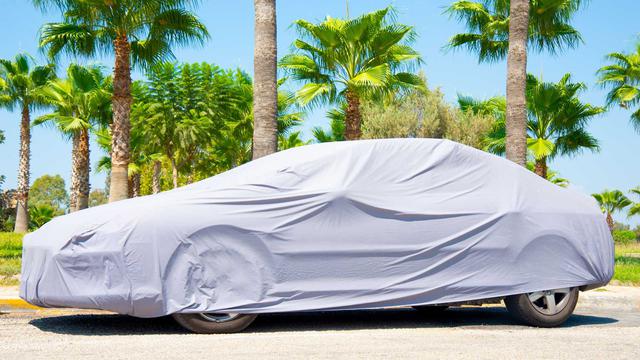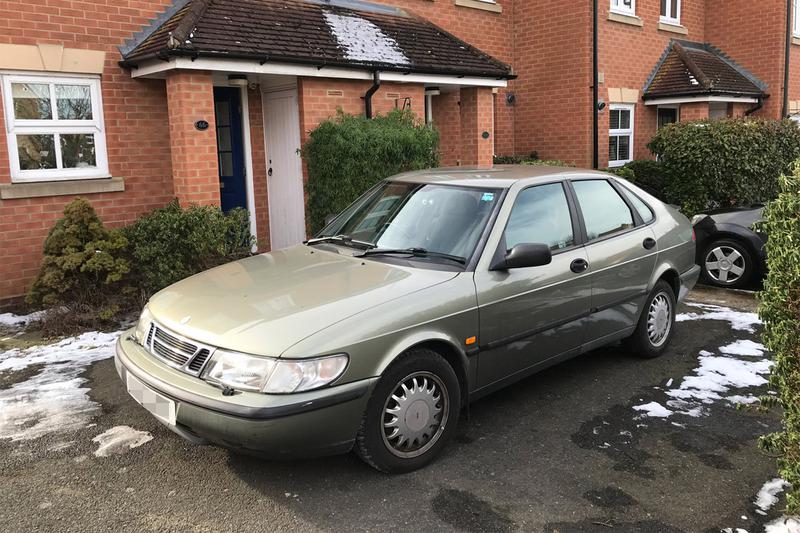Towards the end of the 1980s and through to the early 1990s, car manufacturers massively improved the performance, power, and design of traditional hatchback cars. The resulting cars, which were both accessible and fun, were often referred to as ‘hot hatches.’ Due to the improvements made during this era, there were many exciting and innovative hatchbacks from the 1990s, and some of these influenced future car designs. Here are the 20 best hatchbacks of the 1990s.
20. Ford Fiesta XR2i, 1990
Auto Express claims that the Ford Fiesta XR2i is the car that started the Fiesta’s reputation for being a driver’s car. The popularity of the car is thanks to both its character and its curb appeal. It boasted a fuel-injected version of Ford’s 1.6-litre four-cylinder CVH engine with 103 bhp. Although this may not seem much, the car’s power to its low weight was a positive feature. As the car weighed 850 kg, it meant that the XR2i has a power-to-weight ratio of 121 bhp per tonne.
19. Vauxhall Astra GSi Mk3, 1994
Many of the best hatchbacks are nimble and nifty, but that was not the case with the Vauxhall Astra GSi Mk3. It was bulkier than its rivals, and the handling was poor. However, the plus side to these negative features was that the car was safer than its rivals. The car was powered by the Red Top 2.0-litre four-cylinder petrol engine that was derived from one of Vauxhall’s earlier motorsport engines, says Top Gear. It produced 148 bhp and 196lb of torque. Cosworth collaborated with Vauxhall to build the twin-cam unit. Later versions of this were turbocharged and developed more than 200 bhp. The Vauxhall Astra GSi Mk3 was launched in 1994 and manufactured until 1998.
18. Toyota Corolla GTI-16, 1990
Production of the Toyota Corolla GTI-16 began in the late 1980s. However, it is widely considered a car of the 1990s by the motoring community, as that is when most of these cars sold. It had a 1.6-liter engine with 129 bhp and it was known for its smooth drive, says Evo. Unfortunately, it is one of the 90s hatchbacks that is often forgotten in favor of the French and German cars that were produced in this decade.
17. Seat Ibiza 2.0 MPI GTI, 1996
The Ibiza GTi was one of the first cars manufactured following Seat’s partnership with Volkswagen. The Mk3 Golf was the basis of the design, but Volkswagen made some improvements. The Ibiza 2.0 MPI GTI had better handling than the Golf as it had a lower curb weight, stiffer suspension, and a shorter wheelbase. However, the Ibiza retained some similarities to the Golf, such as its four-cylinder petrol engine. Following the car’s launch, various versions followed throughout the late 1990s. Each version had different acceleration speeds, ranging from 7.2 seconds to 8.6 seconds to reach 62 mph.
16. Proton Satria GTi, 1998
Proton launched the Satria GTi in 1998. Although Proton is not a car manufacturer that is generally associated with class and style, they have produced some decent cars over the years, including the Proton Satria GTi. The 1.8-liter engine in this car was sourced from Mitsubishi, and it had 138 bhp. It wasn’t one of the fastest cars available in the 90s, reaching 62 mph in 7.5 seconds, but it was known for its sharp handling. From the car’s launch in 1998 until 2005, the engine and the handling underwent several modifications and updates.
15. Audi S3 MK1, 1999
Audi launched the S3 KK1 in 1999, and the car was recognized instantly as a premium hot hatch. It featured an inline-4 20v 1.8-liter turbocharged petrol engine that gave the car 203lb of torque and 207 bhp. Thanks to the Quattro all-wheel drive, the Audi S3 Mk1 gripped the road amazingly. The outstanding grip made it one of the most fun hot hatches to drive in the late 1990s.
14. Honda Civic Type R EK9, 1997
When Honda launched this car in 1997, its 1.6-liter naturally aspirated engine had the highest output capacity of any engine in the world at 182 bhp. Like many of its competitors, the Honda Civic Type R EK9 was quick in a straight line. However, what made it stand out from the competition was that it was also quick on country roads.
13. Ford Escort RS Cosworth, 1992
Hyperchips lists the Ford Escort RS Cosworth as one of the best hatchbacks of the 1990s. Ford launched this four-wheel-drive car in 1992, and the same 2.0-liter inline-4 engine of the YBT Garrett Turbo produced 229 lb of torque and 225 bhp. It was one of the fastest cars of the early 1990s, as it could reach 62 mph in just 5.7 seconds. The Ford Escort RS Cosworth was the first mass-production car to generate downforce at both the front and the rear of the car.
12. Citroen Saxo VTS, 1997
The Citroen Saxo VTS garnered a lot of attention when it was launched in 1997, although that was predominantly from the customization scene. Although some of the customization decisions made by the designers were somewhat questionable, it was the right decision to use the small car as a blank canvas to produce something more exciting than previous models. At only 900 kg, it was lightweight enough for quick acceleration, meaning it could achieve 60 mph in 7.8 seconds and had a top speed of 128 mph. The small engine size also made it a more affordable option in terms of insurance, so it was accessible to the masses.
11. Peugeot 306 Rallye, 1999
Towards the end of the 90s, car manufacturers began producing more genteel hot hatches, and the Peugeot 306 Rallye was leading the way. It replaced the 309 rather than the 205, and it boasted Gallic underpinnings and a Pininfarina-penned body that combined fun for the driver and passenger comfort. Some of the changes made from the previous 306models to create the improved Rallye were a 65 kg weight reduction, a faster 0-62 mph time, and the removal of both the air conditioning and the electric windows. The Peugeot 306 Rallye could reach an impressive top speed of 137 mph.
10. Citroen AX GTi, 1992
Lists of the best cars often overlook Citroens, but the Citroen AX GTi is worthy of its position on a list of the best hatchbacks of the 1990s. Various versions of the car were produced by Citroen, starting with the twin-carburetor Sport. The single-carburetor GT followed, then the 100bhp, 1360cc, fuel-injected GTi. It could reach a decent 118 mph, but the most appealing feature was its lightweight frame. The 1990s was the era for making bigger and heavier cars, yet the Citroen AX GTi weighed only 800kg. Many drivers loved that the lightweight frame led to a more thrilling ride.
9. VW Golf VR6, 1992
The VW Golf faced some highs and lows at first. While the Mk1 and Mk2 versions of the models were iconic, the Mk3 version was not as good as its predecessors. However, the car took an upward turn with the introduction of the VW Golf VR6, which Volkswagen launched in 1992. Thanks to its six-cylinder 2.8-liter engine that created 174bhp, the car could reach a speed of 60 mph in 7.1 seconds. Although the VW Golf VR6 was heavier than earlier Golfs, it handled well and felt like a grown-up hatchback.
8. Renault Clio Williams, 1993
The Renault Clio Williams was launched as a limited run in 1993, and Renault only manufactured 3,800 of the model. Another interesting fact about this car is that it was only sold in blue. Its 2-liter engine produced 150bhp. The popularity of the car’s first edition proved so popular that a further two editions were manufactured, with 12,000 sold altogether.
7. Seat Ibiza GTI/ Cupra, 1993
When Seat was taken over by Volkswagen the brand began to make a name for itself. They introduced the Ibiza in 1986, and various forms of the model followed. Seat created the GTI/ Cupra using the basis of the GTI version of the Polo upgraded with a 16-valve engine with 150bhp. Volkswagen hoped to use this model for rallying to improve Seat’s image. The Cupra could top 134 mph and could reach 60mph in 7.6 seconds.
6. Nissan Sunny GTI-R, 1991
Nissan was one of the Japanese manufacturers that embarked on competition programs throughout the late 1980s and early 1990s. Others included Mazda and Honda. The Nissan Sunny GTI-R was based on a family hatchback, but it was built to compete in Group A rally events. A combination of the four-wheel drive and a turbocharged 2.0-liter engine with 227bhp means it can achieve 60 mph in only six seconds. The Nissan Sunny was also known as the Nissan Pulsar in some countries.
5. Fiat Tipo Sedicivalvole, 1992
Goodwood lists the Fiat Tipo Sedicivalvole as one of the best hatchbacks of the 90s. Although the Italian name for this car may sound sexy, sedicivalvole just means 16-valve. The original version of this car was launched in 1989 when it was named the European car of the year. By 1992, the car had undergone several upgrades, including installing a 2.0-liter 16-valve version of the Lanci Thema Lampradi Twin-Cam. Some cosmetic adjustments were also made, including the addition of five-spoke alloys, side skirts, and red-striped bumpers. The interior boasted optional Recaro seats and a Momo steering wheel.
4. Rover 200 BRM, 1997
Rover’s 143bhp 200vi model was used as the basis for the Rover 200 BRM. The manufacturer added to the model a Torsen differential, quilted leather seats, and a firmer suspension. They also lowered the body of the car. Only 1115 of these cars were ever made during the 90s, and 797 of them were for the UK market. The Rover 200 BRM was an underrated car, and some people found the gimmicky visuals, such as the bright orange air intake, off-putting.
3. Ford Fiesta RS Turbo, 1990
The car preceding the Ford Fiesta RS Turbo was the Ford Fiesta XR2i. Although this car had plenty of visual appeal, the handling was not great, and the engine was unrefined. These were issues that Ford’s engineers resolved when they designed the Ford Fiesta RS Turbo, which was launched in 1990. Ford made changes to the Fiesta’s geometry, including adding a bigger anti-roll bar and making the steering quicker. The car could reach 60mph in 7.7 seconds and had a top speed of 132 mph.
2. Peugeot 106 GTI, 1991
Many car enthusiasts consider Peugeot to have set the standards for hot hatches in the 1980s with the 205. Moving into the 90s, it was the smaller 106 model that became the new standard, despite Peugeot manufacturing larger cars such as the GTI-6 and the 306 XSI. The Peugeot 106 GTI was launched in 1991, and the range was then updated five years later. Although the car was only small, it had a 1.6-liter four-cylinder engine with 118bhp. The car’s sharp steering was one of the features that made it fun to drive.
1. Alfa 145 Twin Spark, 1994
According to Classic and Sports Car, one of the best hatchbacks of the 90s was the Alfa 145 Twin Spark. Alfa Romeo launched this model at the Turin Motor Show in 1994. The car’s design made it look a little clumsier than some of its competitors, but the car’s shape did not prevent it from being one of the nippiest cars of the decade. It could achieve 60 mph in eight seconds and had a maximum speed of 129 mph. The 2-liter Twin-Spark engine boasted 150bhp. The production of this car stopped in 2000.



